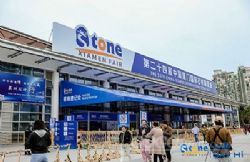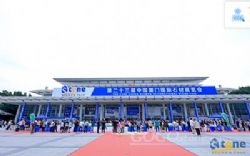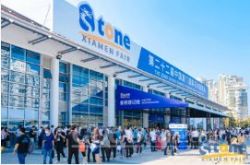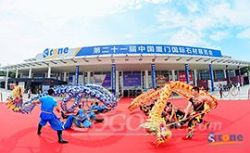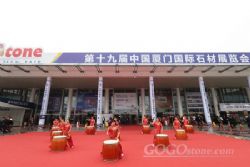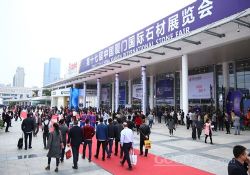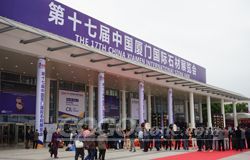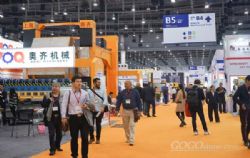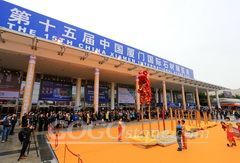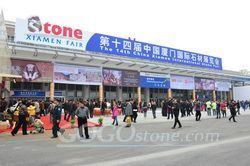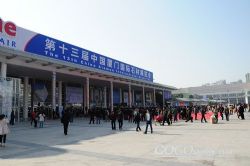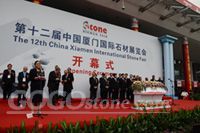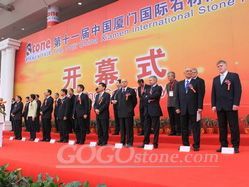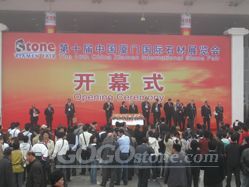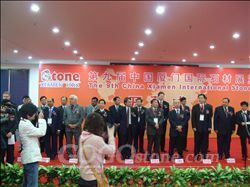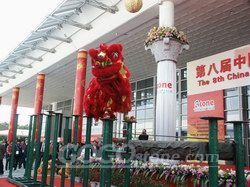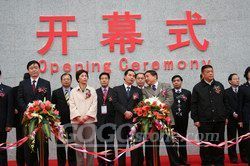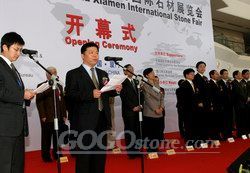Location : Home > News > Market
A monumental stone collaboration
( Date: 2020/7/15 16:54:48 )
Using stone materials from 12 states, as well as stone fabricators in three states and two countries, the Old Parkland North Campus was built over a 24-month period
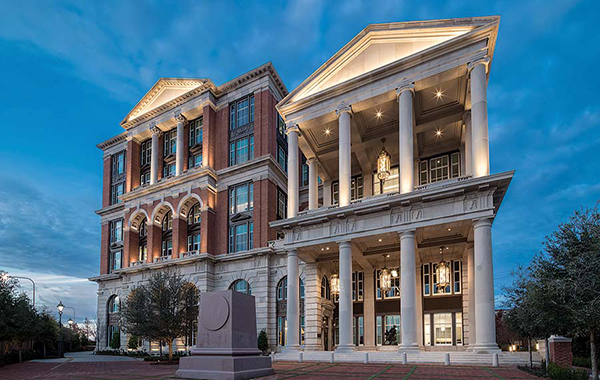
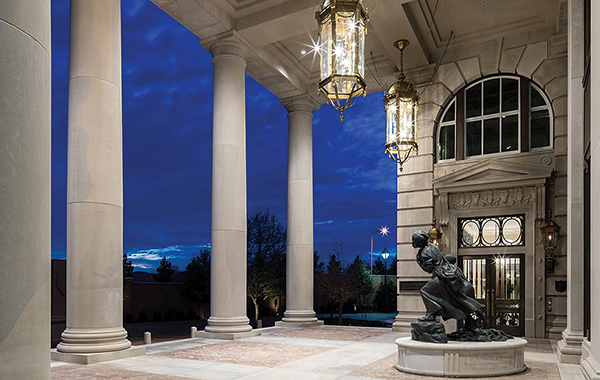
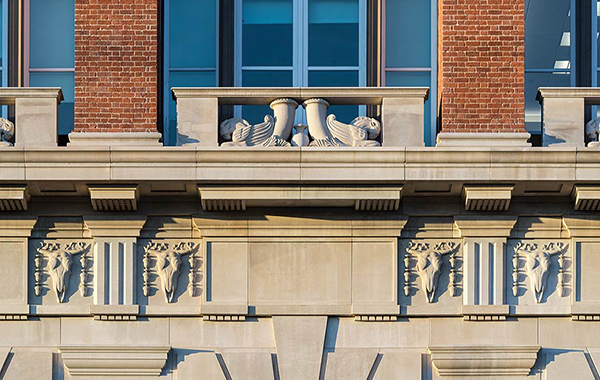
even stories tall, a 210-foot office building and adjacent hardscape combine a multivariate of size, shape and configuration worthy of aesthetically pleasing today’s nobility. Stone and masonry products were sourced from 12 states and fabricated in two countries and three states. Located in Dallas, TX, the Old Parkland North Campus features variegated limestone from Indiana, extracted from an adjacent quarry to one that more than 90 years ago produced the stone for the facade of the Empire State Building. Limestone was used extensively — along with cubic granite, sculpted marble, natural boulders, genuine handmade brick and GFRC panels – to adorn the office building, parking garage, site work, adjacent specialty features and the massive boulder artwork.
Dee Brown, Inc. of Richardson, TX, was contracted to furnish and install the stone and masonry packages on this project. Dee Brown, Inc. is a Nationally Accredited Natural Stone Installation Contractor through the Natural Stone Institute of America. “Architecturally, the campus is built in keeping with Jeffersonian Architecture and utilizes handmade wood-mold brick and Indiana limestone,” said Rob Barnes III, president and CEO of Dee Brown, Inc. “Designed by Craig Hamilton of London, it has been designed to a 100-year-old building standard. The first time I saw the preliminary design, I felt the project needed to be natural stone. Given market forces in June 2017, our knowledge of cost, and of life cycle data between natural stone and cast stone, we presented an option to provide Indiana limestone in lieu of cast stone. To our good fortune, the initial cost to substitute was negligible, and the life cycle cost of natural stone is not comparable — it far exceeds its substitute. Once provided the opportunity to present to the owner; the decision was made to move to natural material. The new North Campus building would be clad with Indiana limestone and be a complement to the Indiana limestone recently restored on the original campus building constructed in 1894.”
The campus also features a Natural Boulder Art Piece where eight individual strands of boulders were engineered and suspended by steel cable from the parking garage ceiling in view from the parking garage entry ramps.
Materials used
Our project management team coordinated the shop drawing, engineering and sequencing aspect of the project in conjunction with 3D Stone Company, Picco Engineering and Coldspring. 3D Stone led the fabrication effort of the various elements of machine fabricated and hand-carved Indiana variegated limestone material.
In order to mitigate some of the scheduling constraints, 3D Stone also subcontracted some of the fabrication through other qualified fabricators, including four truckloads of 8-foot-tall round column pieces, as well as four truckloads of specialty shapes that were cut on a CNC machine at a facility in North Carolina.
Lastly, they coordinated with an international stone carver to complete 180 pieces of hand-carved limestone, which shipped via four ocean containers. These stone carvings included a beast, ram, cornucopia, wind angels and Corinthian capitals.
Altogether, there were 8,310 cut-to-size pieces of Indiana limestone from Bedford, IN, totaling 60,000 cubic feet, and 72,000 square feet of face area. The weight of individual stone pieces varied from 75 to 13,000 pounds. In total, 147 truckloads of stone were shipped with a weight in excess of 9 million pounds from Indiana to Texas to complete this project.
Coldspring procured and fabricated granite for the entry steps; in addition to several different monument of state bases cut out of granite, limestone and marble.
A total of 218 pieces of granite were cut into 150 different piece sizes for the walls, the grand stair and bollards. Quarry blocks were obtained in Brazil and shipped to Coldspring’s facility in Cold Spring, MN, where they slabbed the material, fabricated and finished six truckloads of granite which were crated and shipped to Texas.
Coldspring also coordinated with a marble quarry in Alabama to source white marble blocks that were specially selected for a fountain basin and column. Five quarry visits were required to secure the appropriate blocks that met the size and visual requirements of the artist.
Putting it all together
Bid for award as cast stone, and awarded as limestone, the project quickly became a design build and had much need for refinement of details. These had to be done during the shop drawing process and material procurement stage; and at the same time, the project continued to change. The single largest challenge was the lack of information provided as to where the face of the back-up wall would be from the face of the stone. As well, there were some instances where additional support steel had to be detailed and designed. “These adjustments extended the shop drawing and engineering approval process,” said Tim Hughes, senior vice president of Dee Brown, Inc. “These approvals from the building team were critical to our ability to release stone for fabrication, which was imperative to our team’s success. Working in concert with continual and undivided support of our material suppliers and engineers allowed us to overcome this early hurdle without any interruption or delay of delivering the quality materials and anchors to the site to support our installation crews as needed.”
The design and installation of the steel backup structure, its tolerances and interface with the back of limestone material, presented some significant challenges. “Initially, BIM clash detection was utilized to try and provide information from the steel backup to the stone, however; this didn’t accommodate the tolerance to the placement of the steel or the movement in the structure due to the loading of the stone and masonry material,” said Barnes. “Digital scans were implemented late in the project, which would provide an accurate account of the placement of steel and allow coordination with our stone fabrication facility to modify many of the stone pieces that were previously fabricated to accommodate the tolerances in steel installation.”
“We covered the just-in-time delivery requirement by having two offsite storage lots staffed with five employees that delivered stone to the site each morning,” Barnes went onto say. “It was virtually impossible, due to the myriad of site constraints, site configuration and the ultimate lack of space, to provide enough hoisting to support our crews, which created an unforeseen challenge we had to overcome. In order to keep our crews productive, our only option was creatively rigging the stone and using other means and methods to take the stone from the scaffolding to the wall to final set it. The cranes were used more for flying material to the scaffolds than for setting, which we did not anticipate. This being the case, more crew members, lifting, rigging and time was spent installing pieces in the wall.”
Final appearance and quality
DBI, and our suppliers, worked tirelessly to maintain the highest quality product with the constant reminder that the schedule of completion was paramount. “Dee Brown, Inc. had regular team meetings at the jobsite to discuss proper rigging, handling, stocking and setting methods that were first of all safe and to prevent damage to the stone and other products and to keep future patching and repair to a minimum,” said Hughes. “Job specific patching material was created to match the limestone. A team effort was required to keep from having a large punch list at the end of the project.”
The construction team would immediately, upon completion of an area, punch out the building and provide a list of corrections that needed immediate attention. The punch list and repair process were part of the daily routine. “It would be photographed and logged into the Procore tracking system,” said Hughes. “Dee Brown, Inc. would use the list daily and make the correction as the stone and brick wall was being washed down. Then the punch list item would be taken off Procore. On several occasions an experienced limestone carver from Indiana was brought to Dallas/Fort Worth for the extreme remediation work. The punch list/patching/repair program was a team effort and was a success.”
Timeliness of completion
Dee Brown, Inc. worked 56-hour work weeks for the duration of the project. Crew sizes had to fluctuate depending on other trades’ ability to prepare the work ahead of DBI. At the peak of construction, DBI had more than 80 employees on the project. “Our operations team overcame and worked through one of the wettest fall seasons ever recorded in Dallas/Fort Worth,” said Hughes. “If it was too windy, the cranes would not operate, and our crews were not as productive. Safety overcame the fatigue factor of continual overtime and lifting heavy awkward products daily for more than 12 months.
“The project documents were in continual design,” Hughes went on to say. “We exceeded 750 RFI’s (Request for Information) and 250 pricing exercises, which all had to be processed without additional time to the schedule. Our team, inclusive of our suppliers, had to closely review and timely process these ever-changing contract documents.”
Missing any of the changes could have easily derailed the fabrication of long lead-time products or created a situation in the field where materials would be missing or not fit. “Subcontractors could not proceed until such time the pricing was approved and we were directed to proceed,” said Hughes. “All members of the project worked diligently throughout RFI and proposed change process to ensure that the process went smoothly, stayed on schedule and nothing got missed or priced that could have created issues later on.”
A minimum of two site meetings per week for the duration of the project with the general contractor’s design and construction team to plan to clear any obstacles and coordinate our work with other trades, forecast manpower, and most importantly, discuss material procurement, logistics and scheduling was key to a timely completion. “Very little repetitive work meant our crews needed to adjust for the changes in material types and shapes being installed that particular day and needed multiple skill sets,” said Hughes. “The stone was mechanically anchored, and the brick laid in mortar. Fortunately, Dee Brown, Inc. had the cross-trained employees to be able to perform the installation of any product at any given time. Laying brick requires a trowel and mortar, while setting the stone required rigging, wrenches, drills, numerous different anchor types and, in some cases, welding.”
Safety
Dee Brown, Inc. approached working on this project in a safety-conscious manner. Along with the regular hazards associated with construction, Dee Brown, Inc. recognized certain heightened hazards that were created by unique conditions and situations on this project. In recognizing these hazards, we assisted in establishing plans and procedures to limit exposures.
Hazards existed due to site logistics being very constrained. Those hazards included risk of falls from higher elevations, scaffold falls, continual overhead work exposures and exposure to traffic. Additionally, there were significant rigging dangers due to extensive material handling, and finally, fatigue due to extended working hours for long periods of time.
Each day started with our crews working through our stretch and flex program for warm-up, immediately followed by our daily job hazards analysis meeting prior to beginning work. Site specific safety procedures were established, as well as a continual review of procedures and training.
“Overall design and procurement for Dee Brown, Inc. was approximately eight months and on-site construction approximately 13 months,” said Hughes. “Our crew averaged approximately 46.6 employees per day, with our largest total of 80 employees at the height of construction. During the construction phase of the project, Operations, led by David Masterson, senior vice president of operations, assigned and oversaw eight project superintendents/foremen, three labor foreman and two full-time safety coordinators, who worked 133,000 man-hours with 21% being overtime.” sw
STONE SUPPLIERS FOR THE BOULDER PROJECT: Connecticut Stone Company, Milford, CT (supplied boulders of gneiss and granite); Coldspring, Cold Spring, MN (Rockville White granite, Academy Black granite, Sunset Red granite); Delta Stone Company, Herber City, UT (sandstone, buff sandstone and variegated sandstone; Polycor, Quebec City, Canada (marble boulders, Cherokee White marble); Mountain Valley Stone, Peoa, UT (quartzite boulders, Rocky Mountain granite, Golden Cloud quartzite, White Cloud quartzite, Turquoise quartzite)
From: stoneworld
Latest Resources
- Pacific Shore Stones Celebrates Two Deca...
- Domestic ceramic tile manufacturers seek...
- Kerakoll to open new production facility...
- Stone, carbon fibres and biochar cited a...
- World Floor Covering Association Introdu...
- Ceramics of Italy Previews Coverings 202...
- Coverings 2024 Earth Day Activations wil...
- Lunada Bay Tile refreshes Linen collecti...
- Design Holding Opens Flagship Store
- ISFA Revamps Regional Events
Previous Fair

